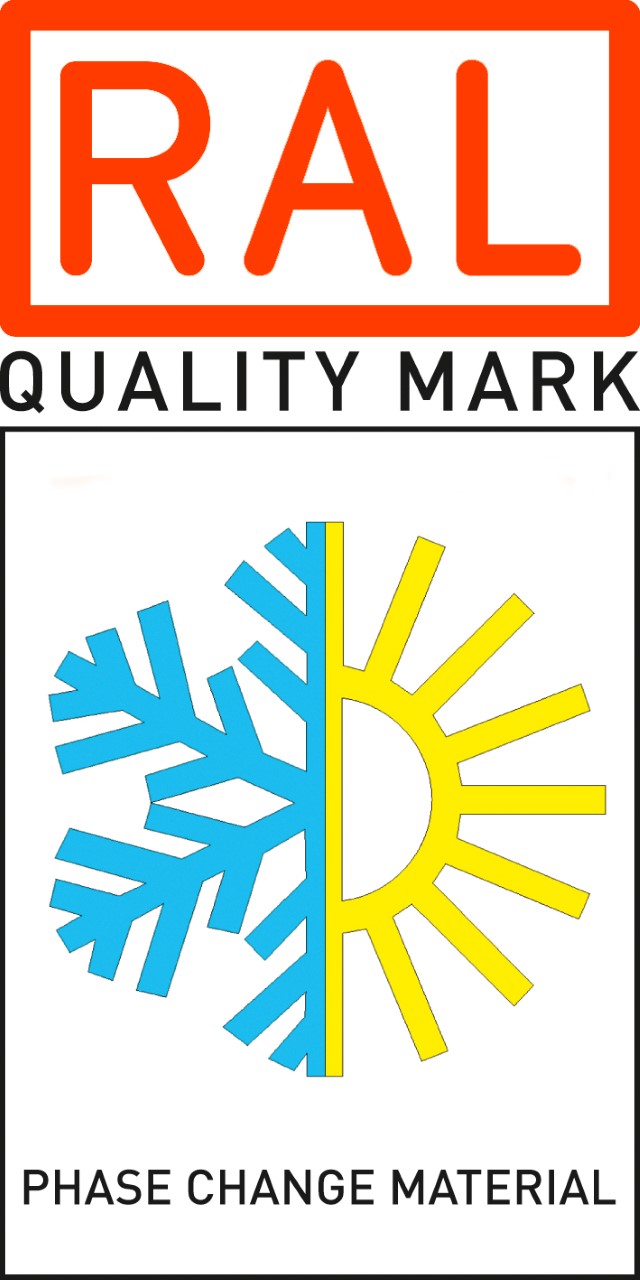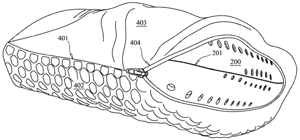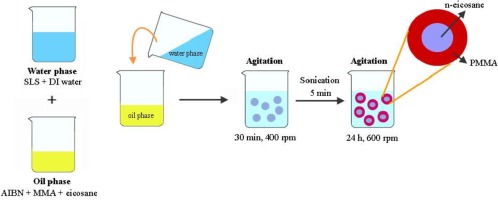 The Phase Change Matters e-mail newsletter is a weekly summary of the latest news and research on phase change materials and thermal energy storage. To subscribe, visit www.puretemp.com/subscribe. For more frequent updates, follow @puretemp on Twitter or visit the Phase Change Matters blog, www.puretemp.com/pcmatters.
The Phase Change Matters e-mail newsletter is a weekly summary of the latest news and research on phase change materials and thermal energy storage. To subscribe, visit www.puretemp.com/subscribe. For more frequent updates, follow @puretemp on Twitter or visit the Phase Change Matters blog, www.puretemp.com/pcmatters.
PCM STANDARDS
RAL’s updated testing specifications are now available online
A revised version of a document outlining the RAL Quality Association PCM’s quality testing program has been approved by the association’s governing body and is now available on the association’s website.
 “Quality and Testing Specifications for Phase Change Materials,” also known as RAL-GZ 896, sets out the general principles for PCM. The document defines PCM, PCM composites, PCM objects and PCM systems; establishes performance requirements; and outlines the nature and scope of monitoring measures.
“Quality and Testing Specifications for Phase Change Materials,” also known as RAL-GZ 896, sets out the general principles for PCM. The document defines PCM, PCM composites, PCM objects and PCM systems; establishes performance requirements; and outlines the nature and scope of monitoring measures.
Improvements to RAL-GZ 896 include:
• Clearer structure and wording.
• Heat flow meter measurements are now permissible. This will make measuring larger PCM products much easier.
• Reduced testing frequency during cycling. The prior edition required testing the quality criteria at fixed intervals during cycling. The new edition recommends testing at intervals during cycling (to reduce the risk that cycling is continued until the end despite the sample has already failed) and the intervals are wider. These changes are designed to reduce the cost of testing.
• Segregation, an important criterion for salt hydrates especially, was approved as an additional quality requirement.
• Better explanation of monitoring.
“The now published document is a huge improvement” says Stefan Thomann, the association’s managing director. “Over a period of two years, an expert task group added crucial requirements, new measurement methods and better explanation and guidance. The RAL Quality Mark as an independent proof of outstanding quality has become even more meaningful now.”
PATENTS
Cooling pillow with phase change material
 U.S. patent application 20180140116 (applicant Marc L. Werner, Plantation, Fla.):
U.S. patent application 20180140116 (applicant Marc L. Werner, Plantation, Fla.):
“A cooling pillow generates a gust of cooled air when compressed. A solid, resilient, compressible foam block forms a core of the cooling pillow. A phase change material layer adhered to a surface of the foam block. Holes can be formed in the foam block to enhance the feel of the pillow and to improve the speed at which air is displaced when the cooling pillow is compressed.”
An artificial turf system and applications thereof
U.S. patent application 20180142426 (inventors Reyad Sawafta and Jeffrey Bruner, Greensboro, N.C.):
“An artificial turf system comprising: an artificial turf mat; and artificial turf fibers disposed on a surface of the artificial turf mat, the artificial comprising at least one energy management material, wherein the at least one energy management material comprises a phase change material.”
Self-warming insulation
U.S. patent application 20180142383 (applicant PrimaLoft Inc., Latham, N.Y.):
“The invention provides an insulation material that includes exothermic fibers, heat capturing fibers capable of retaining heat, and synthetic fibers. The heat capturing fibers having a density of at least 1.17 g/cm3or 2.0 Dtex linear density. Also provided are articles comprising, and methods of making the inventive insulation material. … In some embodiments, the heat capturing fibers are selected from fibers containing ceramic, fibers containing carbon, and fibers containing phase change material (PCM).”
IN BRIEF
• The industry group Copper Alliance takes a look at Sunamp Ltd.‘s use of copper heat exchangers in its PCM-equipped heat battery systems: “Copper has a few properties that make it ideal for this application, including high thermal conductivity, lack of corrosion when in contact with the PCM, and the ability to satisfy potable water regulations required to fully certify Sunamp’s products.”
• Bloomberg’s David Fickling explains why the development of lower-cost energy storage technologies will be renewable energy’s “next big thing.”
• Swedish researchers have produced a bio-based material that is reported to be stronger than spider silk and all other known bio-based materials, whether fabricated or natural. Working with cellulose nanofiber, the essential building block of plants, researchers at KTH Royal Institute of Technology have developed larger, lightweight materials for use in airplanes, cars, furniture and other products.
• Ecozen Solutions of India, which makes PCM-equipped portable solar cold rooms for use on small farms, was profiled this week in India Climate Dialogue.
• New from Global Info Research: “Global Microencapsulation Technology Market 2018 by Manufacturers, Countries, Type and Application, Forecast to 2023“
• New from Market Research Future: “Global Advanced Energy Storage Systems Market Research Report – Forecast to 2027“
• New from HongChun: “2018 Global Molten Salt Solar Energy Thermal Storage and Concentrated Solar Power (CSP) Industry Depth Research Report“
• Horizon 2020‘s RealValue group has released findings on its three-year, small-scale energy storage project. The group, led by Glen Dimplex and consisting of 13 partner organizations, installed smart electric thermal storage systems in 750 commercial and residential properties in Ireland, Germany and Latvia. Among the findings: “Smart control of SETS devices simultaneously reduces charging costs of the devices while improving the thermal comfort of the end user. It also has potential to manage congestion.”
RESEARCH ROUNDUP
For our full list of recent academic research, see puretemp.com/academic. Here are highlights from the past week:
From Thermal Science and Engineering Progress:• Experimental investigation into the feasibility of using a variable conductance heat pipe for controlled heat release from a phase-change material thermal store
From Thermochimica Acta:
• Form-stable phase change nanocomposites for thermal energy storage based on hypercrosslinked polymer nanospheres
From International Journal of Thermal Sciences:
• Non-monotonously tuning thermal conductivity of graphite-nanosheets/paraffin composite by ultrasonic exfoliation
From Sustainable Computing: Informatics and Systems:
• A review of thermal management and innovative cooling strategies for data center
From Renewable Energy:
• Numerical analysis of a latent heat thermal energy storage system under partial load operating conditions
From Energy Conversion and Management:
• Graphene embedded form stable phase change materials for drawing the thermo-electric energy harvesting
From Solar Energy Materials and Solar Cells:
• Performance of novel Na2SO4-NaCl-ceramic composites as high temperature phase change materials for solar power plants (Part II)
From Materials Chemistry and Physics:
• Synthesis and Characterization of Micro-Nanoencapsulated n-eicosane with PMMA Shell as Novel Phase Change Materials for Thermal Energy Storage

NETWORKING
Connect with PCM experts and industry leaders on LinkedIn
 More than 1,250 people have joined a LinkedIn group devoted to the discussion of phase change material and thermal energy storage. The Phase Change Matters group is an interactive complement to the award-winning blog and newsletter of the same name.
More than 1,250 people have joined a LinkedIn group devoted to the discussion of phase change material and thermal energy storage. The Phase Change Matters group is an interactive complement to the award-winning blog and newsletter of the same name.
You are invited to join the group and connect with PCM and TES experts from around the world. This week we welcome Courtney Slattery, an undergrad at Mississippi State University in Mississippi; Sivaram S, an associate engineer at Rangsons Defence Solutions, Bengaluru, India; Rishav Kumar Rai, an undergrad at BA College of Engineering and Technology, Jamshedpur, India; and G. Mohy Ud Din, assistant sales and marketing manager at Universal Chemical Industries, Pakistan.